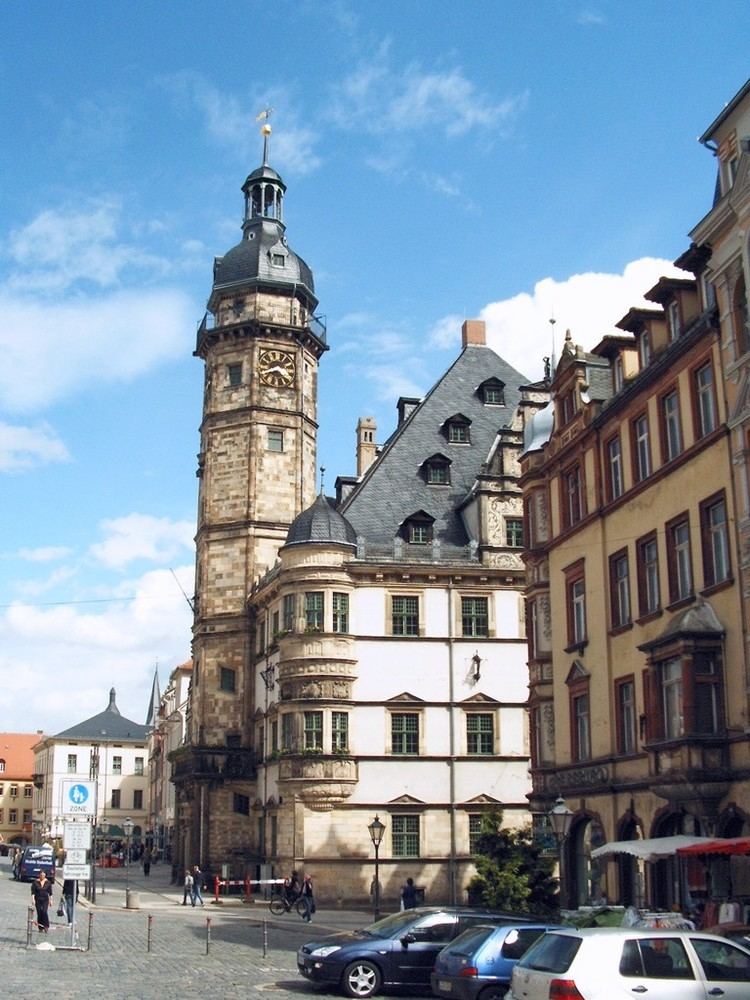Name Nikolaus Gromann | ||
 | ||
Nikolaus Gromann (c. 1500; † November 29, 1566 in Gotha ) was a master builder for the Kurfürst Johann Friedrich (der Großmütige).
Contents
Background
He was over 30 years in the service of the Ernestine branch of the Wettin . A 1536 by Johann Friedrich I directed him to the first letter is handed a written message from Gromann, he push it as stone metz . In 1537 he wrote in a report to the elector : After me i.f.g. ( Your princely grace ) is assumed to be a builder to Bauwen Weyda . His teachers were Konrad ( also Kunz ) Krebs ( † 1540 in Torgau ) and Andreas Günter ( † 1542 in Torgau ), whose work he continued . As a first residence is called Weida . 1544 is Gotha hisresidenc, in 1550 he moved to Weimar, where he builds his own house . Which he sold in 1563 to move back to Gotha. Already in 1553 the Elector there he had some pieces of farmland to Gotha securitized. 1543 calls him Johann Friedrich I. as a builder for life. Special attention was given to Gromann first time to 1545 when he built the first built after the Reformation Protestant Church : the chapel at Schloß Hartenfels in Torgau . The Emporensaal- church he added skillfully into the medieval structure . Luther dedicated himself to completing the church. The model of the Torgau Castle Church based the designs of the later buildings of the Castle Chapel Protestant princes in Dresde, Schwerin, Stettin(Szczecin), Heidelberg and Augustusburg . 1552 Gromann has once again made his Torgau similar design for the chapel of the castle Grimmenstein, which unfortunately was not preserved . Gromann supervised many construction sites in the Ernestine countries, in addition he built castles and town halls, churches, fortifications, roads, bridges and fountains.
The particular merit of Nikolaus Gromann is the introduction of Renaissance design in the Ernestine countries. In his early work he expressed it in another gothic buildings executed by Renaissance decorative forms . As late work he built masterful Renaissance building, which are considered his masterpieces : the Town Hall in Altenburg and the so-called New buildings in Weimar, the Grünes Schloß (now the “Duchess Anna Amalia Library” ) and the Französischen Bau of the Veste Heldburg ( today : German Castle Museum under construction) . Gromann has executed his design for the beautiful bay window in the living apartments of the elector on the north wing of the Schloß Torgau and again at its best from 1560 to 1564 at the Französischer Bau of the Veste Heldburg twic . Today, the two bay windows are men's and women called bay . At the same time his design was created by the magnificent Town Hall of Altenburg . His design of Gera town hall he could not run itself, which took over from Nikolaus Theiner 1573 .
